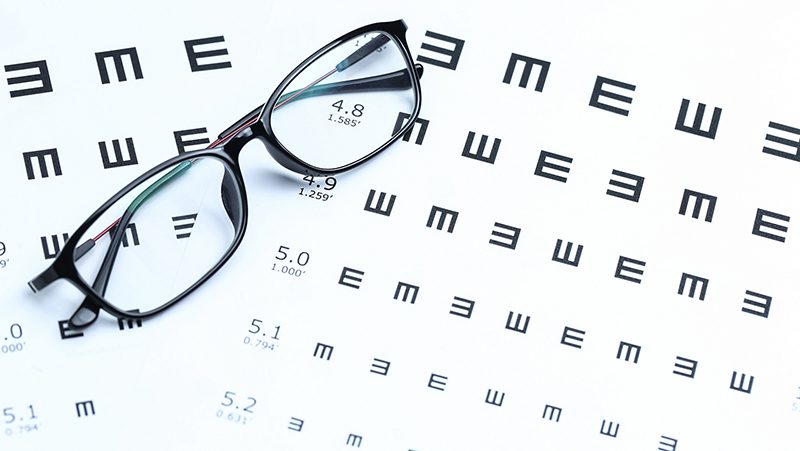At Atlantic Endocrinology & Diabetes Center, we know that patients who have recently been diagnosed with glaucoma often ask their eye doctor how and to what extent their condition will affect their day-to-day activities. Although glaucoma isn’t a life-threatening disease, loss of vision can elicit some rightful fears for the future. Glaucoma is the second leading cause of vision loss, with almost 66.8 million people affected worldwide. There’s no doubt lifestyle factors and other changes go hand-in-hand with low vision, and it is highly likely you’ll need to make some adjustments to your routine after receiving a diagnosis.

Everyday tasks may come as a challenge as your eye disease progresses; but it’s imperative to remember you do not have to live with glaucoma-related disability. Early detection is the best weapon against glaucoma; and current ophthalmic advancements offer treatment options which can help to manage, prevent or reduce the side effects of your condition.
Early detection, through regular and complete eye exams, is the key to protecting your vision from damage caused by glaucoma.
A complete eye exam includes five common tests to detect glaucoma.
It is important to have your eyes examined regularly. You should get a baseline eye screening at age 40. Early signs of eye disease and changes in vision may start to occur at this age. Your eye doctor will tell you how often to have follow-up exams based on the results of this screening.
If you have high risk factors for glaucoma, diabetes, high blood pressure, or a family history of glaucoma, you should see an eye doctor now to determine how often to have Eye Exams.
A Comprehensive Glaucoma Exam
To be safe and accurate, five factors should be checked before making a glaucoma diagnosis:
Regular glaucoma check-ups include two routine eye tests: tonometry and ophthalmoscopy.
Tonometry
Tonometry measures the pressure within your eye. During tonometry, eye drops are used to numb the eye. Then a doctor or technician uses a device called a tonometer to measure the inner pressure of the eye. A small amount of pressure is applied to the eye by a tiny device or by a warm puff of air.
The range for normal pressure is 12-22 mm Hg (“mm Hg” refers to millimeters of mercury, a scale used to record eye pressure). Most glaucoma cases are diagnosed with pressure exceeding 20 mm Hg. However, some people can have glaucoma at pressures between 12 -22 mm Hg. Eye pressure is unique to each person.
Ophthalmoscopy
This diagnostic procedure helps the doctor at Atlantic Endocrinology & Diabetes Center examine your optic nerve for glaucoma damage. Eye drops are used to dilate the pupil so that the doctor can see through your eye to examine the shape and color of the optic nerve.
The doctor will then use a small device with a light on the end to light and magnify the optic nerve.
If your intraocular pressure (IOP) is not within the normal range or if the optic nerve looks unusual, your doctor may ask you to have one or two more glaucoma exams: perimetry and gonioscopy.
Perimetry
Perimetry is a visual field test that produces a map of your complete field of vision. This test will help a doctor determine whether your vision has been affected by glaucoma. During this test, you will be asked to look straight ahead as a light spot is repeatedly presented in different areas of your peripheral vision. This helps draw a “map” of your vision.
Do not be concerned if there is a delay in seeing the light as it moves in or around your blind spot. This is perfectly normal and does not necessarily mean that your field of vision is damaged. Try to relax and respond as accurately as possible during the test.
Your doctor may want you to repeat the test to see if the results are the same the next time you take it. After glaucoma has been diagnosed, visual field tests are usually done one to two times a year to check for any changes in your vision.
Gonioscopy
This diagnostic exam helps determine whether the angle where the iris meets the cornea is open and wide or narrow and closed. During the exam, eye drops are used to numb the eye. A hand-held contact lens is gently placed on the eye. This contact lens has a mirror that shows the doctor if the angle between the iris and cornea is closed and blocked (a possible sign of angle-closure or acute glaucoma) or wide and open (a possible sign of open-angle, chronic glaucoma).
Pachymetry
Pachymetry is a simple, painless test to measure the thickness of your cornea — the clear window at the front of the eye. A probe called a pachymeter is gently placed on the front of the eye (the cornea) to measure its thickness. Pachymetry can help your diagnosis, because corneal thickness has the potential to influence eye pressure readings. With this measurement, your doctor can better understand your IOP reading and develop a treatment plan that is right for you. The procedure takes only about a minute to measure both eyes